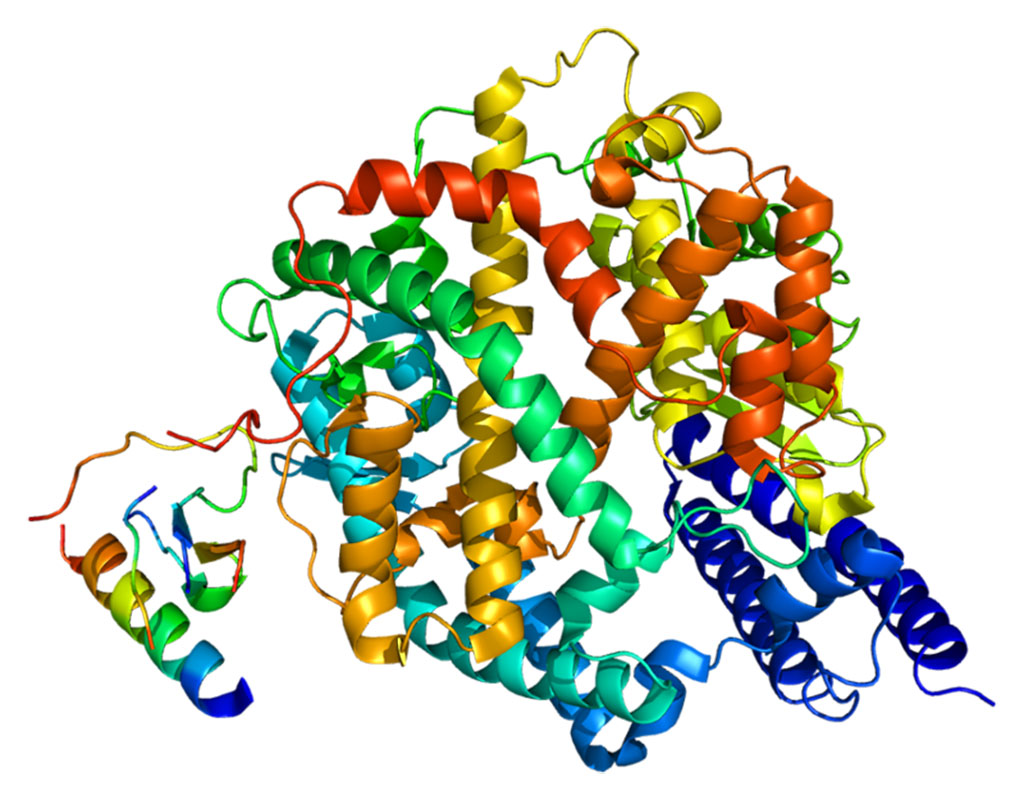Higher Concentrations of COVID-19 Receptor Protein Found in Men’s Plasma
By LabMedica International staff writers
Posted on 18 May 2020
Results of a large-scale study revealed that plasma concentrations of angiotensin-converting enzyme 2 (ACE2) were higher in men than in women, but use of neither an ACE inhibitor nor an angiotensin receptor blocker (ARB) was associated with higher plasma ACE2 concentrations.Posted on 18 May 2020
ACE2 lowers blood pressure by catalyzing the hydrolysis of angiotensin II (a vasoconstrictor peptide) into angiotensin (a vasodilator). It counters the activity of the related angiotensin-converting enzyme (ACE) by reducing the amount of angiotensin II. ACE2 is not only an enzyme but also a functional receptor on cell surfaces for both SARS-CoV (SARS coronavirus) and SARS-CoV-2 (COVID-19), and is highly expressed in the heart, testis, kidneys, and lungs, and shed into the plasma. Some reports have suggested that inhibitors of the renin–angiotensin–aldosterone system (RAAS) increase plasma ACE2 concentrations, although these speculations have not been supported by a substantial body of research.

Image: Structure of the angiotensin-converting enzyme 2 (ACE2) protein (Photo courtesy of Wikimedia Commons)
To follow up on these reports, investigators at University Medical Center Groningen (The Netherlands) analyzed plasma concentrations of ACE2 in two large and independent cohorts of men and women with heart failure according to the use of RAAS inhibitors.
The investigators measured ACE2 concentrations in blood samples taken from two groups of heart failure patients from 11 European countries. There were 1485 men and 537 women in the index cohort and a second group of 1123 men and 575 women in the validation cohort. The median age of the participants in the index cohort was 69 years for men and 75 years for women, and 74 and 76 years, respectively, in the validation cohort.
ACE2 was measured using the Olink Proteomics (Uppsala, Sweden) Proseek analysis service. The Olink platform utilizes a high-throughput multiplex immunoassay based on a proprietary proximity extension assay (PEA) technology, where each biomarker is addressed by a matched pair of antibodies, coupled to unique, partially complementary oligonucleotides, and measured by quantitative real-time PCR.
Results revealed that male sex was the strongest predictor of elevated ACE2 concentrations. In the index cohort, ACE inhibitors, ARBS, and mineralocorticoid receptor antagonists (MRAs) were not associated with greater ACE2 plasma concentrations. In the validation cohort, ACE inhibitors and ARBs were associated with lower ACE2 concentrations, while MRAs were only weakly associated with higher concentrations. These findings might explain the higher incidence and fatality rate of COVID-19 in men, but do not support previous reports suggesting that ACE inhibitors or ARBs increase the vulnerability for COVID-19 through increased plasma ACE2 concentrations.
"To the best of our knowledge, this is the first substantial study to examine the association between plasma ACE2 concentrations and the use of blockers of the renin-angiotensin-aldosterone system in patients with cardiovascular disease. We found no evidence that ACE inhibitors and ARBs were linked to increased ACE2 concentrations in plasma. In fact, they predicted lower concentrations of ACE2 in the validation cohort, although we did not see this in the index cohort," said senior author Dr. Adriaan Voors professor of cardiology at the University Medical Center Groningen. "ACE2 is a receptor on the surface of cells. It binds to the coronavirus and allows it to enter and infect healthy cells after it is has been modified by another protein on the surface of the cell, called TMPRSS2. High levels of ACE2 are present in the lungs and, therefore, it is thought to play a crucial role in the progression of lung disorders related to COVID-19."
The study was published in the May 10, 2020, online edition of the European Heart Journal.
Related Links:
University Medical Center Groningen
Olink Proteomics














